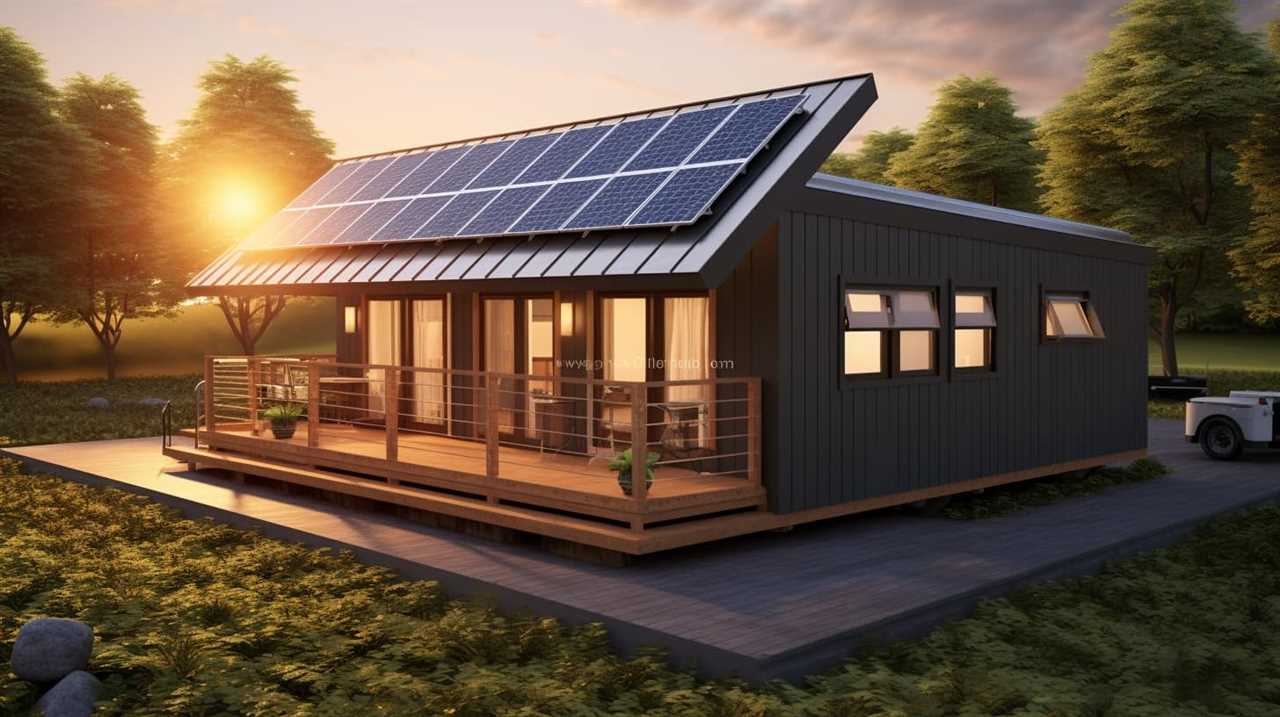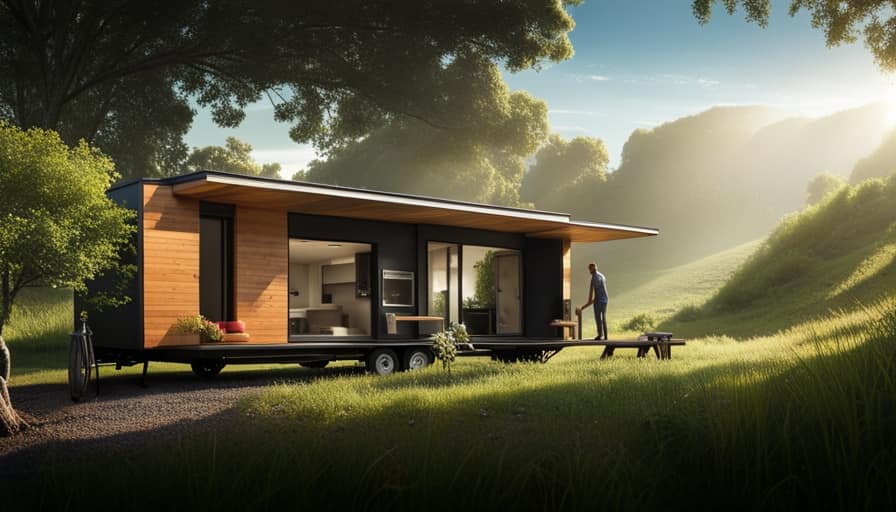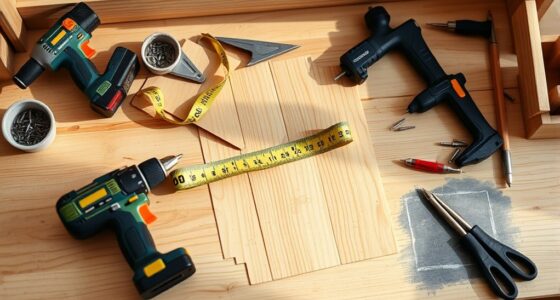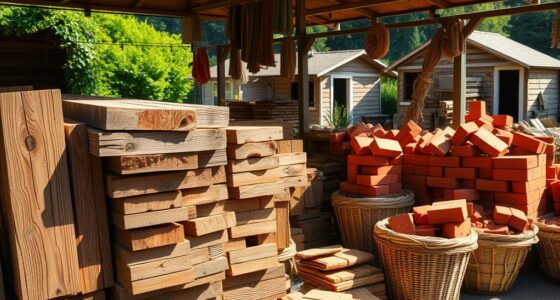I was astonished to learn that there are more than 10,000 tiny houses on wheels in the United States, as someone who aspires to own a tiny house.
But how do I certify my own tiny house on wheels?
In this article, I will guide you through the process of understanding the certifications and regulations, researching building codes and standards, choosing the right certification agency, preparing the necessary documentation and plans, and successfully going through the certification process.
Let’s dive in and make your tiny house dreams a reality!
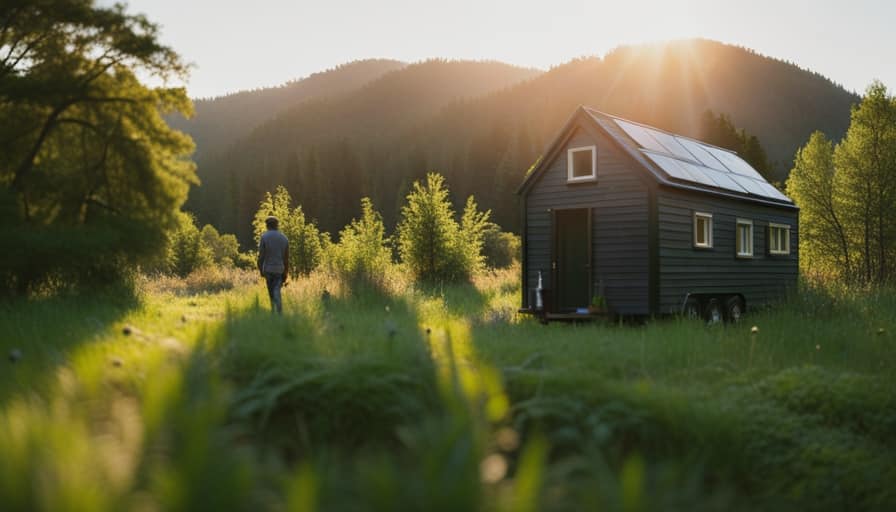
Key Takeaways
- Certifications and regulations for tiny houses on wheels vary by location and have cost implications and associated fees.
- It is important to research and choose a reputable certification agency that aligns with specific needs and goals.
- Preparing for certification involves contacting the local building department, seeking guidance from professionals, and ensuring compliance with building codes and regulations.
- Going through the certification process requires regularly updating documentation, double-checking compliance, submitting necessary documentation for review, and addressing any deficiencies or recommendations.
Understanding the Certifications and Regulations
I can understand the certifications and regulations for certifying a tiny house on wheels.
When it comes to certifying a tiny house on wheels, there are several factors to consider. One of the most important aspects is understanding the cost implications. Certifications and regulations can vary greatly depending on your location, and it’s crucial to be aware of any associated fees or expenses.
Additionally, exploring alternative certification options can help you find a solution that fits your needs and budget. Some certifications may be more affordable or offer different benefits than others. By thoroughly researching and understanding the various certification options available, you can make an informed decision that aligns with your goals and resources.
With this understanding in mind, it’s important to also research the building codes and standards that apply to your specific location and situation.
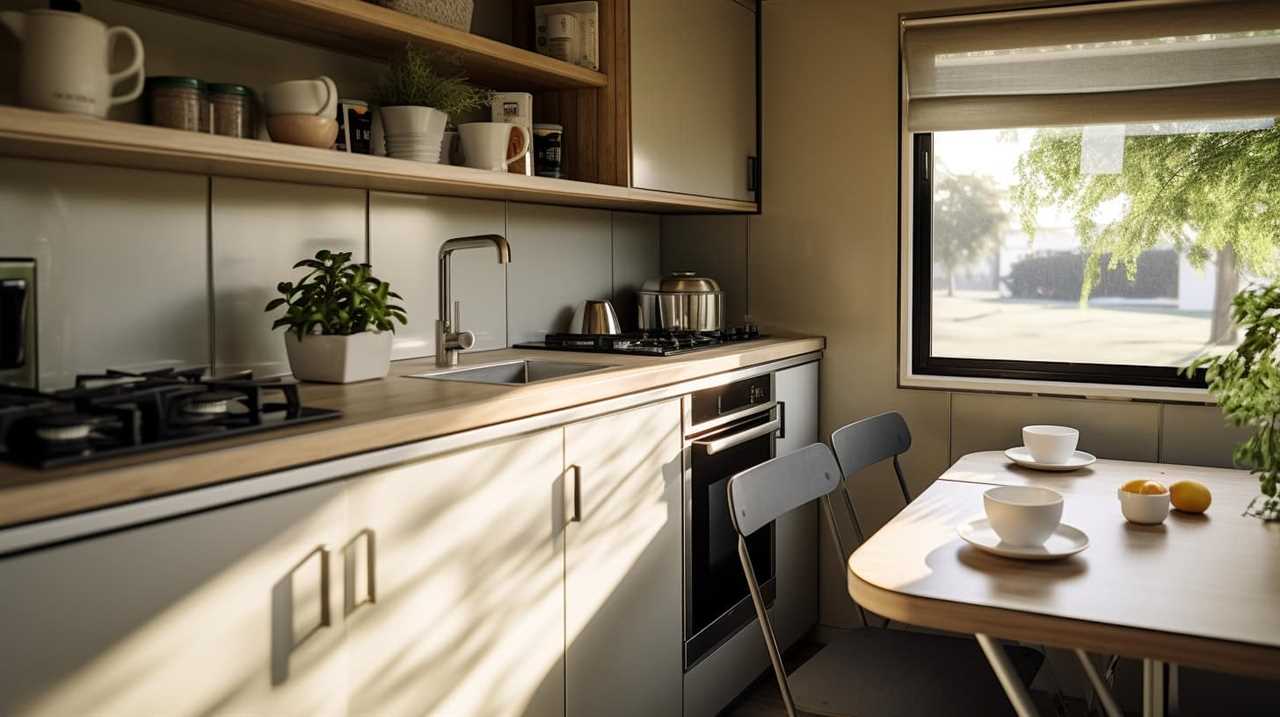
Researching the Building Codes and Standards
Researching the building codes and standards can help ensure that your tiny house on wheels meets all necessary requirements for certification. It’s important to familiarize yourself with the specific building code requirements and safety standards that apply to your area.
Here are some key steps to consider when researching the building codes and standards:
-
Contact your local building department: Reach out to your local building department to obtain a copy of the building codes and regulations that are relevant to your tiny house on wheels.
-
Consult with professionals: Seek guidance from professionals, such as architects or builders, who’ve experience with tiny houses on wheels and are knowledgeable about building codes and safety standards.
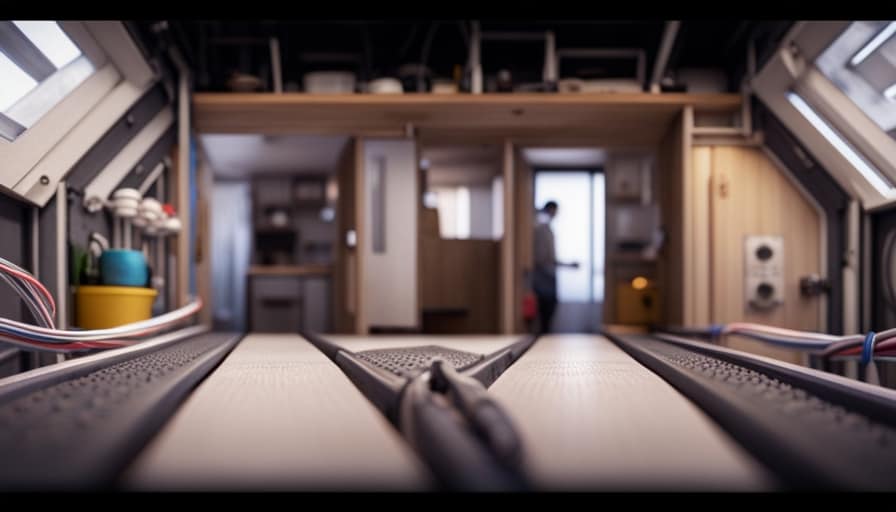
-
Join online communities: Engage with online communities and forums dedicated to tiny house living. These platforms can provide valuable insights and resources on building codes and standards.
Choosing the Right Certification Agency
Finding the right certification agency is crucial when certifying a tiny house on wheels. There are several certification options available, and it’s important to choose an agency that aligns with your specific needs and goals.
When selecting a certification agency, cost considerations should also be taken into account. Some agencies may charge a flat fee for the certification process, while others may charge based on the size or complexity of the tiny house. It’s important to weigh the cost of certification against the benefits it will provide, such as increased resale value and assurance of quality and safety.
Researching and comparing different certification agencies can help you make an informed decision and ensure that your tiny house on wheels meets all the necessary standards and regulations.

Preparing the Documentation and Plans
Once you have chosen the right certification agency, it’s important to regularly update and review your documentation and plans for your tiny house on wheels. Document submission is a crucial step in the certification process, and it’s essential to ensure that all required documents are complete and accurate. Compliance requirements can vary depending on the certification agency, so it’s important to carefully review their guidelines and specifications.
Here are three key points to consider when preparing your documentation and plans:
-
Organize your documents: Keep all your paperwork in one place and create a system for easy access and retrieval.
-
Double-check compliance: Review the compliance requirements regularly to ensure you’re meeting all necessary standards.
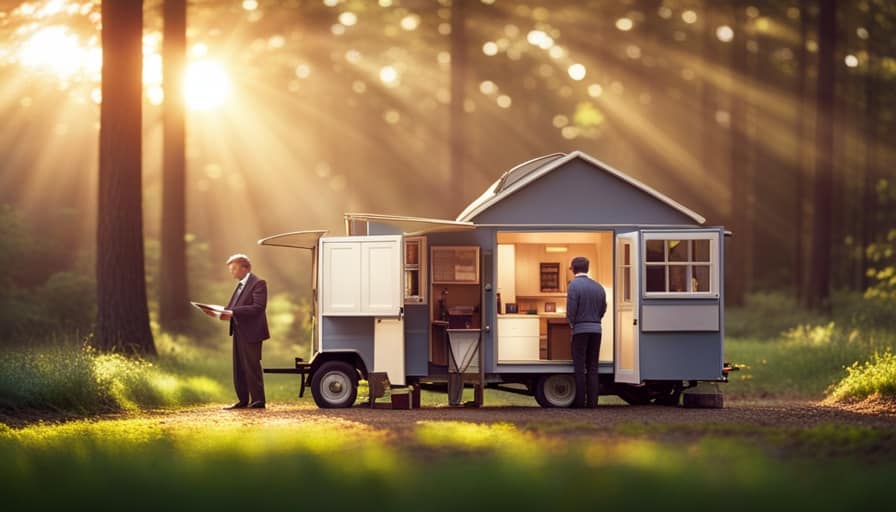
-
Seek professional guidance: If you’re unsure about any aspect of the documentation or plans, consult with professionals who’ve experience in the certification process.
Going Through the Certification Process
Navigating the certification process can be a time-consuming and complex task, but it’s crucial for ensuring the legitimacy and compliance of my tiny house on wheels.
To begin, I need to research the certification requirements specific to my location. Each jurisdiction may have different regulations and criteria that need to be met. This could include minimum size requirements, safety standards, and zoning restrictions.
Once I’ve a clear understanding of the requirements, I can start gathering the necessary documentation and submitting it for review. It’s important to note that the cost of certification can vary depending on the jurisdiction and the complexity of the process. In some cases, it may involve hiring professionals such as architects or engineers to assist with the certification process.

However, the investment is worthwhile as it ensures that my tiny house on wheels meets all necessary standards and is legally compliant.
Frequently Asked Questions
How Much Does It Cost to Certify a Tiny House on Wheels?
Certifying a tiny house on wheels can be costly. The cost breakdown includes fees for inspections, permits, and certifications. The certification process timeline varies depending on the jurisdiction, but it typically takes several weeks to complete.
Can I Build My Own Tiny House on Wheels or Do I Need to Hire a Professional?
Building your own tiny house on wheels is possible, but it’s important to consider building regulations. Hiring a professional can ensure compliance and save you time and headaches.
Are There Any Specific Requirements for the Materials Used in the Construction of a Certified Tiny House on Wheels?
When certifying a tiny house on wheels, specific requirements must be met for the materials used in construction. These requirements ensure safety and durability. It’s important to consult with professionals familiar with certification processes to ensure compliance.
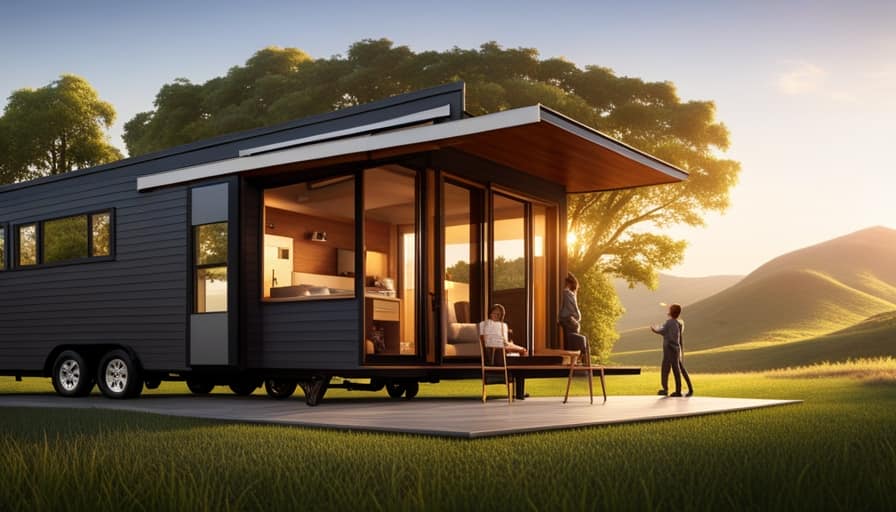
How Long Does the Certification Process Usually Take From Start to Finish?
The certification process timeline for a tiny house on wheels can vary depending on the specific requirements and regulations. It is important to prioritize certification to ensure compliance and safety standards are met.
Once My Tiny House on Wheels Is Certified, Do I Need to Renew the Certification Periodically?
Once certified, I must periodically renew my tiny house on wheels’ certification to ensure its validity. This renewal process is important as it guarantees compliance with regulations and ensures the safety and quality of my home.
Conclusion
After thoroughly researching and understanding the certifications and regulations,
researching building codes and standards,
choosing the right certification agency,
and preparing the necessary documentation and plans,
I successfully went through the certification process for my tiny house on wheels.
It was a challenging journey, but I’m proud to say that I crossed all the t’s and dotted all the i’s.

Now, my tiny house is certified and ready to hit the road,
proving that where there’s a will, there’s a way.
I’m Theodore, and I love tiny houses. In fact, I’m the author of Tiny House 43, a book about tiny houses that are also tree houses. I think they’re magical places where imaginations can run wild and adventures are just waiting to happen.
While tree houses are often associated with childhood, they can be the perfect adult retreat. They offer a cozy space to relax and unwind, surrounded by nature. And since they’re typically built on stilts or raised platforms, they offer stunning views that traditional homes simply can’t match.
If you’re looking for a unique and romantic getaway, a tree house tiny house might just be the perfect option.
